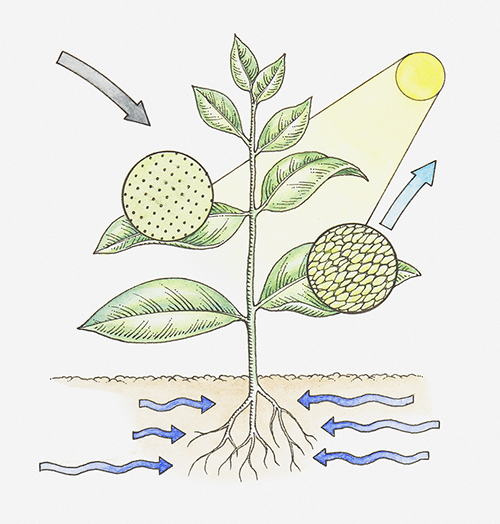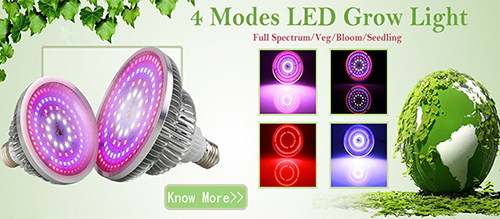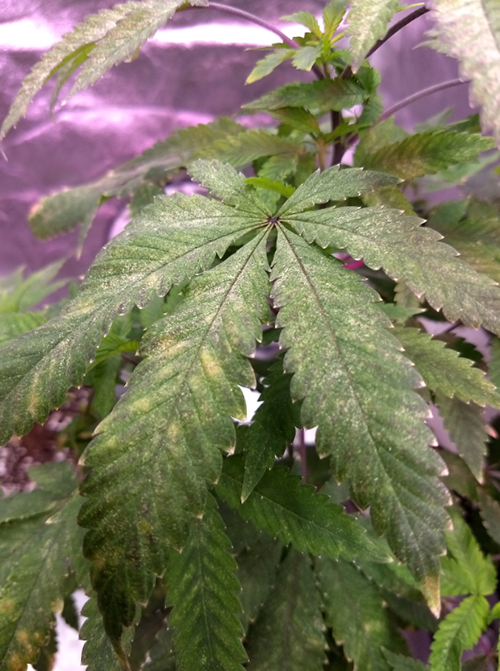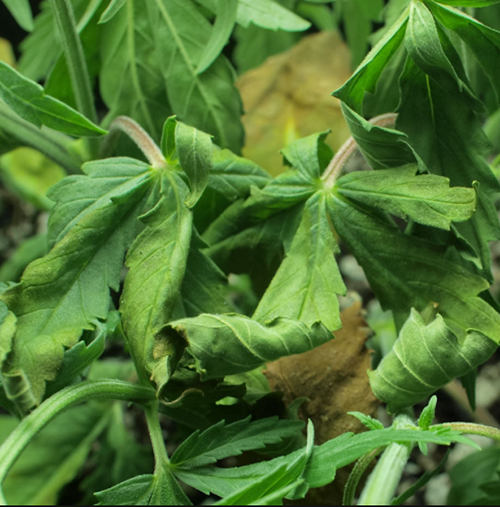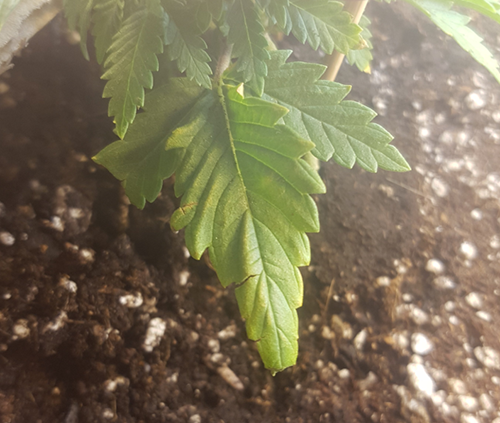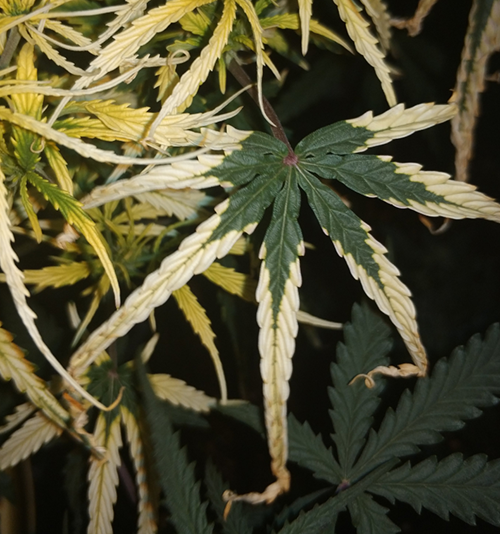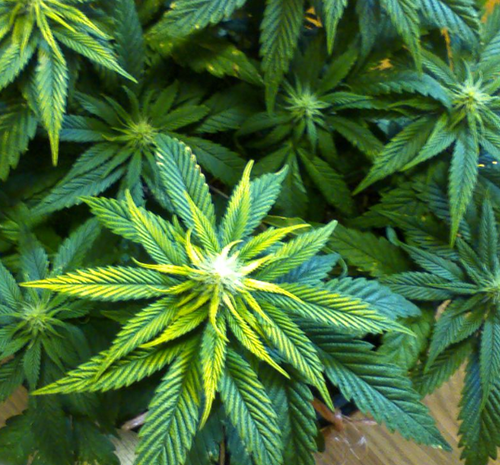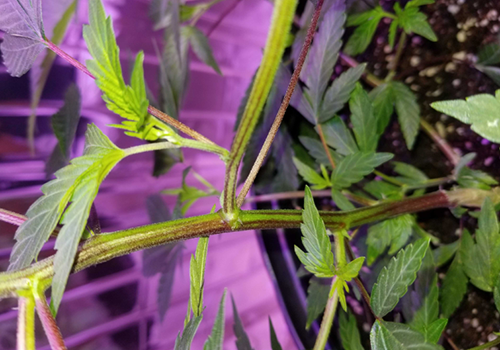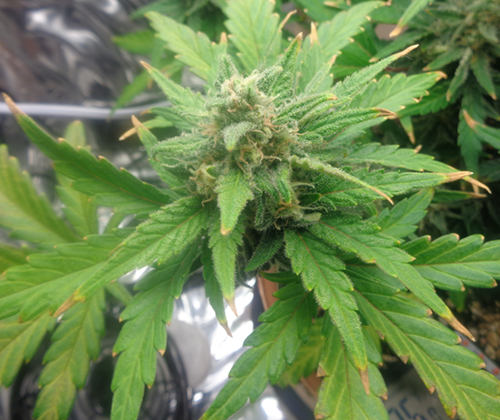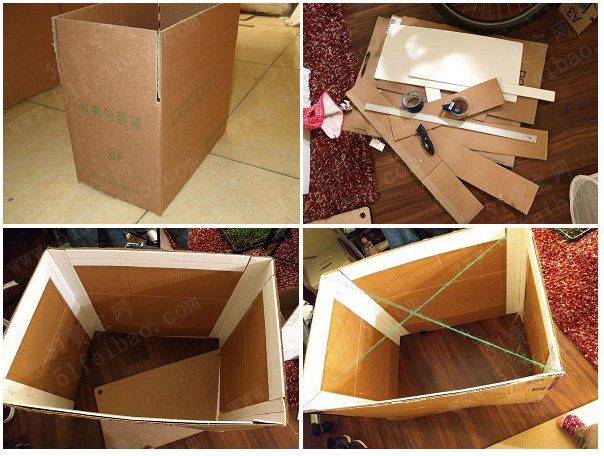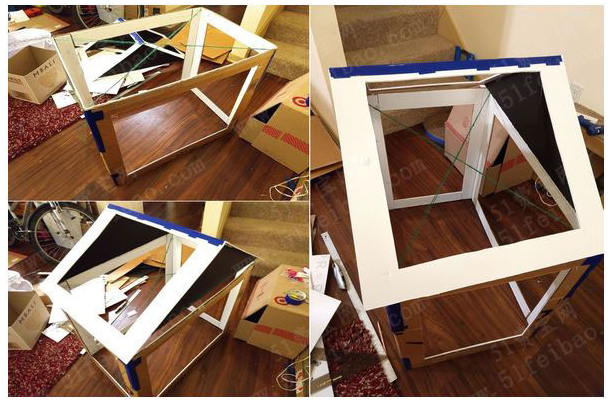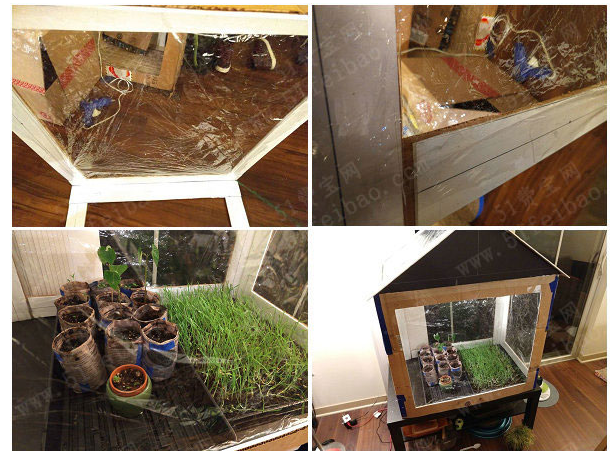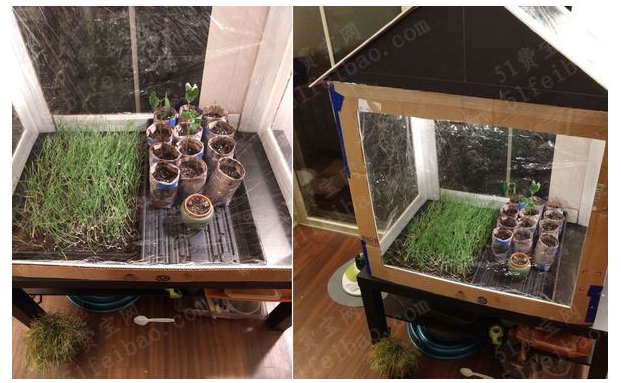“Because of the rapid urban population growth, urban food is difficult to meet people's needs, and LED plant lighting technology can achieve localized production, which not only improves efficiency, increases crop yield, but also solves food safety problems.”
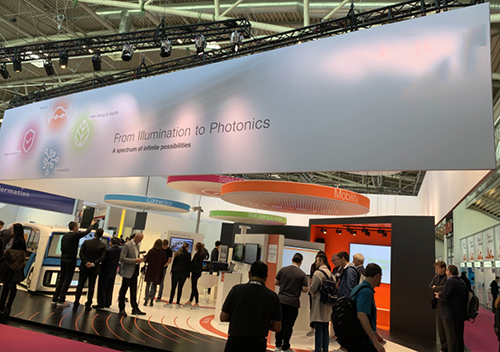
LED Advantages In Plant Growth Lighting
With the continuous development of modern agriculture, the demand and energy consumption of plant lighting is constantly expanding, and new challenges are also raised for traditional plant lighting technology. As a new generation of a light source, in addition to the characteristics of energy saving and environmental protection, LED has the advantages of the free combination of spectrum, high color purity, and rich color compared with fluorescent lamps or high-pressure sodium lamps commonly used in traditional agricultural fields.
According to plant lighting experts, compared to traditional plant lighting technology, LED technology has lower power consumption and can save a lot of energy costs. LED-based plant lighting solutions can help growers achieve both production demand and sustainability goals, which can help growers increase production by 25% and energy costs by 50%. The special lighting configuration not only optimizes the yield and growth time but also enhances the nutrients contained in the crop and improves its taste and flavor.
It can be seen that LED growing lamps can be designed into various styles of light sources according to different plant types, purposes, and needs, and precisely control the required spectrum. It is suitable for various illumination methods and types of plant factories. Arrived.
LED Grow Lights Has Broad Prospects
With the continuous improvement of LED plant lighting technology, its application fields will become more and more extensive, including skyscraper tops, vertical farms, greenhouse canopies, homes, shopping malls, and even abandoned containers, etc., can develop plant lighting. According to statistics, the CAGR of the LED plant lighting market will reach 27% from 2015 to 2020. Among them, the increase in food demand is expected to reach 59%-98% by 2025.
According to the estimation of the scale of the existing agricultural industry in the world, the demand for agricultural LED lighting fixtures and their control equipment will reach tens of billions of yuan in the next five years. Plant factories and greenhouse fill light will be the fastest growing LED lighting field with high technical content. The equipment is intelligent and systematic, and it is the focus of the development of the agricultural semiconductor lighting industry. It can be seen that with the increase in the penetration rate of global LED application agricultural lighting, the future market prospect is broad.
Although LED plant lighting has a broad market space, there are still some shortcomings in specific applications. Since LED plant lights need to comprehensively consider factors such as light intensity, spectrum, tube distribution uniformity, efficiency, and heat generation, and plant growth requires specific bands, different varieties, and growth cycles will have different light requirements, so plant factories need to Integrate plant species, growth stages, etc., and adjust the optimal growth curve in a timely manner.
The Passages of the LED grow lights you may be interested in:
《Why Does The LED Grow Lights Need To Dissipate Heat》

LED Advantages In Plant Growth Lighting
With the continuous development of modern agriculture, the demand and energy consumption of plant lighting is constantly expanding, and new challenges are also raised for traditional plant lighting technology. As a new generation of a light source, in addition to the characteristics of energy saving and environmental protection, LED has the advantages of the free combination of spectrum, high color purity, and rich color compared with fluorescent lamps or high-pressure sodium lamps commonly used in traditional agricultural fields.
According to plant lighting experts, compared to traditional plant lighting technology, LED technology has lower power consumption and can save a lot of energy costs. LED-based plant lighting solutions can help growers achieve both production demand and sustainability goals, which can help growers increase production by 25% and energy costs by 50%. The special lighting configuration not only optimizes the yield and growth time but also enhances the nutrients contained in the crop and improves its taste and flavor.
It can be seen that LED growing lamps can be designed into various styles of light sources according to different plant types, purposes, and needs, and precisely control the required spectrum. It is suitable for various illumination methods and types of plant factories. Arrived.
LED Grow Lights Has Broad Prospects
With the continuous improvement of LED plant lighting technology, its application fields will become more and more extensive, including skyscraper tops, vertical farms, greenhouse canopies, homes, shopping malls, and even abandoned containers, etc., can develop plant lighting. According to statistics, the CAGR of the LED plant lighting market will reach 27% from 2015 to 2020. Among them, the increase in food demand is expected to reach 59%-98% by 2025.
According to the estimation of the scale of the existing agricultural industry in the world, the demand for agricultural LED lighting fixtures and their control equipment will reach tens of billions of yuan in the next five years. Plant factories and greenhouse fill light will be the fastest growing LED lighting field with high technical content. The equipment is intelligent and systematic, and it is the focus of the development of the agricultural semiconductor lighting industry. It can be seen that with the increase in the penetration rate of global LED application agricultural lighting, the future market prospect is broad.
Although LED plant lighting has a broad market space, there are still some shortcomings in specific applications. Since LED plant lights need to comprehensively consider factors such as light intensity, spectrum, tube distribution uniformity, efficiency, and heat generation, and plant growth requires specific bands, different varieties, and growth cycles will have different light requirements, so plant factories need to Integrate plant species, growth stages, etc., and adjust the optimal growth curve in a timely manner.
The Passages of the LED grow lights you may be interested in:
《Why Does The LED Grow Lights Need To Dissipate Heat》
Xinjia New Products Cannot Be Underestimated
As an emerging market, the market scale of LED growing light continues to grow, attracting a large number of lighting companies to develop. What Xinjia is stronger than its competitors is that it has a lot of biologists who can study the spectrum, the intensity of light, the temperature of the light, the humidity, etc., which are needed for different crops according to the needs of customers. Good quality, yield, biological cycle, and metabolism ultimately achieve the results customers want. Xinjia uses the current technology team to develop LED plant lights that better meet customer needs.
The Small plant lamp suitable for personal use
Advantage
1.Newest Design And Best Choice for Improving Plant Health & Growth
The latest design of Warm LED plant growth lamps in 2019, using the highest quality LED chips (over 5,0000 hours of service life). This plant grows light bulb is energy-saving, has high luminous efficiency, fast heat dissipation, low power Consumption, long service life, soft light. Our LED grows lights provide the most efficient wavelength of light for your plants to improve photosynthesis, improve the healthy growth of plants.
2.Energy Saving And High Brightness
This LED grow light bulb is a light energy consumption and saves electricity, and the light is very bright, not hurting plants and Lens plant to grow bulbs make your indoor gardening more enjoyable.
3.Wide Range of Applications
This LED plant grow light bulbs use warm lights to illuminate your plants, easy to use and easy to install. This plant grows light lamp is suitable for indoor plant seedlings grown in the home or office hydroponic greenhouses: marijuana, succulents, tomatoes, peppers, Roses, basil, parsley, eucalyptus, potted plants, flowering plants, and any other fruits and vegetables. This LED plant grow light lamp makes your plants grow faster and healthier.
4.High-quality heat dissipation And Long Span Life
Our LED grow bulbs are made of metal aluminum radiator shell and umbrella design, which can dissipate heat better and more efficiently. Even if the plant grow light lamp is used continuously, the temperature of the plant grows light lamp will remain at an appropriate level for Plant growth without worrying about an increase in heat and will last longer. It will not harm your plant, effectively extend the service life, and promote plant growth and protection.
5.Good Service and Quality Guaranteed
Our LED Grow Light Bulbs have passed CE certification and 100% quality assurance to provide you with the best shopping experience. If you are not satisfied with this LED Plant Lights Bulb, please feel free to contact us. Do not worry, we will offer a 2-Year After-sales Service and a 30-Day Refund Service. Buy this LED plant grow light bulb without risk, now add a shopping cart!

The LED Plant light for large-scale planting
Advantage
1.New Design And Lowest Cost
This LED grow light uses a unique dual-plug design that can be used according to the needs of the plant so that each light can be optimally utilized and to help you better control the growth of the plant cost controlling costs.
2.Full Spectrum And Wide Use
This grow light designed with an exclusive full spectrum including Red, Blue, UV, IR, Warm and White, provide the most suitable light spectrum for plant growth from seedlings to harvest, perfect for all growing phases of plants, seeding, flowering, and fruiting Increase the harvest.
3.High Efficiency
Design with high-quality LEDs, brighter than others, practical concentrate the light and reduce light loss, ensure high luminous efficiency & light penetration, maximizing the plants' absorption of the lighting.
4.Good Heat Dissipation and Low Energy Cost
This led grow light bar is built-in constant current drives power, revolutionary heat dissipation with aluminum plate, keep the grow light in the cooler working environment and prolong the lifespan.
5.Reliable Seller And Good Service
Xinjia is a professional led products manufacturer, 2 years warranty and 30 days satisfaction or return guarantee is our promise. If you have any problem, please feel free to contact us, we will provide prompt and satisfying customer service.

The Small plant lamp suitable for personal use
Advantage
1.Newest Design And Best Choice for Improving Plant Health & Growth
The latest design of Warm LED plant growth lamps in 2019, using the highest quality LED chips (over 5,0000 hours of service life). This plant grows light bulb is energy-saving, has high luminous efficiency, fast heat dissipation, low power Consumption, long service life, soft light. Our LED grows lights provide the most efficient wavelength of light for your plants to improve photosynthesis, improve the healthy growth of plants.
2.Energy Saving And High Brightness
This LED grow light bulb is a light energy consumption and saves electricity, and the light is very bright, not hurting plants and Lens plant to grow bulbs make your indoor gardening more enjoyable.
3.Wide Range of Applications
This LED plant grow light bulbs use warm lights to illuminate your plants, easy to use and easy to install. This plant grows light lamp is suitable for indoor plant seedlings grown in the home or office hydroponic greenhouses: marijuana, succulents, tomatoes, peppers, Roses, basil, parsley, eucalyptus, potted plants, flowering plants, and any other fruits and vegetables. This LED plant grow light lamp makes your plants grow faster and healthier.
4.High-quality heat dissipation And Long Span Life
Our LED grow bulbs are made of metal aluminum radiator shell and umbrella design, which can dissipate heat better and more efficiently. Even if the plant grow light lamp is used continuously, the temperature of the plant grows light lamp will remain at an appropriate level for Plant growth without worrying about an increase in heat and will last longer. It will not harm your plant, effectively extend the service life, and promote plant growth and protection.
5.Good Service and Quality Guaranteed
Our LED Grow Light Bulbs have passed CE certification and 100% quality assurance to provide you with the best shopping experience. If you are not satisfied with this LED Plant Lights Bulb, please feel free to contact us. Do not worry, we will offer a 2-Year After-sales Service and a 30-Day Refund Service. Buy this LED plant grow light bulb without risk, now add a shopping cart!

The LED Plant light for large-scale planting
Advantage
1.New Design And Lowest Cost
This LED grow light uses a unique dual-plug design that can be used according to the needs of the plant so that each light can be optimally utilized and to help you better control the growth of the plant cost controlling costs.
2.Full Spectrum And Wide Use
This grow light designed with an exclusive full spectrum including Red, Blue, UV, IR, Warm and White, provide the most suitable light spectrum for plant growth from seedlings to harvest, perfect for all growing phases of plants, seeding, flowering, and fruiting Increase the harvest.
3.High Efficiency
Design with high-quality LEDs, brighter than others, practical concentrate the light and reduce light loss, ensure high luminous efficiency & light penetration, maximizing the plants' absorption of the lighting.
4.Good Heat Dissipation and Low Energy Cost
This led grow light bar is built-in constant current drives power, revolutionary heat dissipation with aluminum plate, keep the grow light in the cooler working environment and prolong the lifespan.
5.Reliable Seller And Good Service
Xinjia is a professional led products manufacturer, 2 years warranty and 30 days satisfaction or return guarantee is our promise. If you have any problem, please feel free to contact us, we will provide prompt and satisfying customer service.



